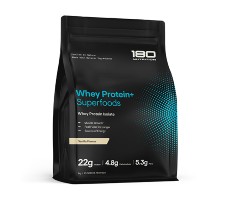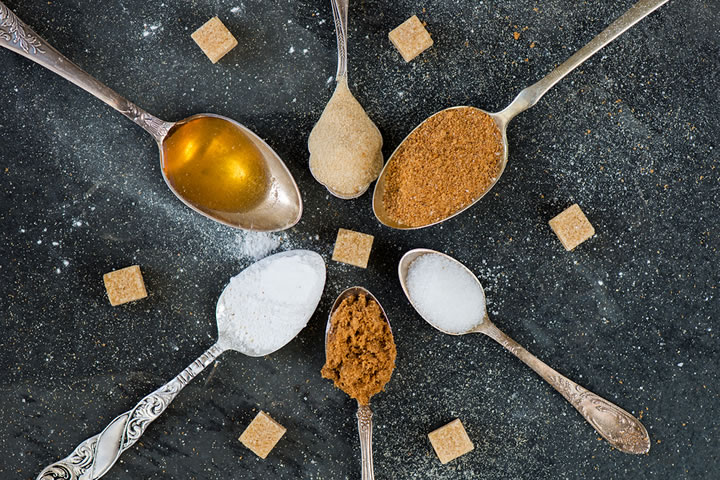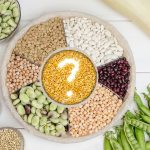The World Health Organisation* recommended that adults consume no more than an average of 25g of sugar per day as part of a balanced diet.
Over time, a diet which contains excess sugar can lead to weight gain, tooth decay, diabetes, an increase in inflammation in the gut, and the list of harmful conditions goes on. Research unquestionably points to the fact that reducing added sugar should is a strategy worth following.
With a teaspoon holding approximately four grams, the WHO guidelines suggest no more than approximately six teaspoons a day.
By the time you’ve had a bowl of cereal with milk, a sprinkle of sugar to take the cardboard taste away, and a glass of fruit juice for breakfast; you’re done for the day. In fact, if your goal is to stay within a healthy range, you’d be well over.
With sugars occurring naturally in foods which have a high nutritional content such as fruit, vegetables and dairy products; sugar consumption is an essential part of a balanced diet. Foods that are high in sugar but hold minimal nutritional value however, are not.
The big culprits are the obvious chocolate, candy, chips, cakes, muffins, ice creams, breakfast cereals and soft drinks. These should be off the regular menu and avoided if you’re concerned with living a healthy life.
While this sounds relatively straightforward; sugar makes otherwise ordinary foods taste good, and as such, it’s a multi-billion-dollar a year industry. Supermarkets want, no NEED, you to continue consuming it; sadly, there’s a lot of money to be made from a poor diet.
So while consumers are becoming more aware of the perils of a sugar-laden diet, the big food and drinks manufacturers, are getting smarter at disguising it.
Sugar is everywhere, and it’s hidden in many places you wouldn’t even think to look. With the six teaspoons a day in the back of your mind, let’s have a look at some of the hidden ways sugar is being sneaked into your products.
Beware of ingredients ending in ‘ose’
If only sugar were sugar like in the good old days – clearly labelled and clearly identifiable. Products sold by supermarkets must, by law, have a nutrition label clearly identifying all ingredients and the quantity. Sugar isn’t just sugar anymore, and some other names for the harmful white stuff include:
- Sucrose
- Dextrose
- Maltose
- Glucose
- Fructose
In case I’ve missed anything, the rule of thumb is to be aware of anything ending in ‘ose’.
It’s sugar.
Not only that, don’t stop reading once you’ve found the first offender. It’s not unheard of (read standard) for 20g of sugar in a product to be broken down into three or four different smaller amounts, all named as something different, to fool you into thinking there is less sugar in the product.
Beware of ingredients that don’t end in ‘ose’!
Some names for sugar that don’t end in ‘ose’ are:
- Dextrin
- Barley malt
- Cane sugar
- Golden syrup
- Caramel
- Maltodextrin
- Fruit juice
- Sorghum syrup
- Agave nectar
- Molasses
- Diatase
- Ethyl maltol
- Corn syrup
- Carob syrup
- Turbinado
Guess what? All sugar! The only way to be aware of the sugar content of your groceries is to learn this list of words, (or print it off and keep it with you), and get into the beneficial habit of reading your food labels before putting anything in your trolley.
Low fat often equals high sugar
With consumers becoming increasingly concerned about their waistlines; marketers are still using ‘low-fat’ as a common way to sell their products. People are getting wise to this however and are starting to realise that taking the fat out of a product makes it taste crappy, so adding sugar is the best way to make it taste good. Study the labels of low-fat versus regular products, and you’ll notice the comparably high sugar content of the low-fat product.
While we’re being told that we’re doing the right thing for our bodies, low fat is not always the better option. Excess sugar (whichever name is given to describe it) can lead to excess fat, which can lead to further health issues..
I’m going to call it; sugar is added to all (or at the very least, most) processed foods and not just the sweet treats. Sauces, convenience meals, bread, yoghurts, and cordial all contain huge serves of sugar which, when added to a typical daily diet, add up to dangerous quantities of consumption for the average person.
Some alternative natural sweeteners which are better for your waistline and more importantly, your inflammation levels, are stevia, rice malt syrup, raw honey, molasses and lucuma powder.
If you can’t avoid packaged food altogether, learn how to read the label properly so you can make informed decisions before you put something into your body.
Reference:
* World Health Organisation – Guideline: sugars intake for adults and children







